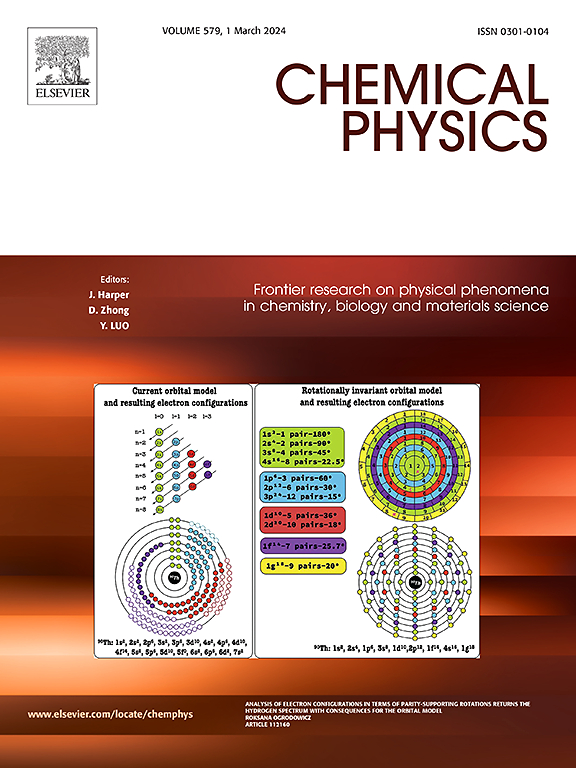First-principles calculations to investigate structural, electronic, elastic and thermal properties of Mg doped Ti2Ni intermetallics
IF 2
3区 化学
Q4 CHEMISTRY, PHYSICAL
引用次数: 0
Abstract
The electronic, elastic and thermal properties of Mg doped Ti2Ni intermetallics are predicted based on DFT theory. The results show that Ti site is preferentially substituted by Mg atoms and a resonance effect occurs between Mg–2p and Ti–3d orbitals, causing the TDOS peak near Fermi level to split with dopant concentration increasing, resulting in the strength increases and ductility decreases correspondingly. The elastic constants indicated that the bulk, shear and Young's modulus of doped compound are lower than that of the undoped ones. The BH/GH ratio of doped system is greater than 1.75 and the Poisson's ratio is above 0.26. Comparatively, the (Ti64–x + Mgx)Ni32 exhibits greater elastic strength than that of Ti64(Ni32–x + Mgx). Doping leads to a relatively lower covalent character in Ti64(Ni32–x + Mgx) and stronger bonding capability in (Ti64–x + Mgx)Ni32, resulting in a significant changes in modulus. Consequently, the Debye temperature of the (Ti64–x + Mgx)Ni32 is higher than that of the Ti64(Ni32–x + Mgx).
第一性原理计算研究了Mg掺杂Ti2Ni金属间化合物的结构、电子、弹性和热性能
基于DFT理论预测了Mg掺杂Ti2Ni金属间化合物的电子、弹性和热性能。结果表明,随着掺杂剂浓度的增加,Ti位优先被Mg原子取代,Mg - 2p轨道和Ti - 3d轨道之间发生共振效应,导致费米能级附近的TDOS峰分裂,强度增加,延展性降低。弹性常数表明,掺杂化合物的体模量、剪切模量和杨氏模量均低于未掺杂化合物。掺杂体系的BH/GH比大于1.75,泊松比大于0.26。相比之下,(Ti64 - x + Mgx)Ni32的弹性强度要高于Ti64(Ni32 - x + Mgx)。掺杂导致Ti64(Ni32 - x + Mgx)的共价性质相对较低,而(Ti64 - x + Mgx)Ni32的成键能力较强,导致模量发生显著变化。因此,(Ti64 - x + Mgx)Ni32的Debye温度高于Ti64(Ni32 - x + Mgx)。
本文章由计算机程序翻译,如有差异,请以英文原文为准。
求助全文
约1分钟内获得全文
求助全文
来源期刊

Chemical Physics
化学-物理:原子、分子和化学物理
CiteScore
4.60
自引率
4.30%
发文量
278
审稿时长
39 days
期刊介绍:
Chemical Physics publishes experimental and theoretical papers on all aspects of chemical physics. In this journal, experiments are related to theory, and in turn theoretical papers are related to present or future experiments. Subjects covered include: spectroscopy and molecular structure, interacting systems, relaxation phenomena, biological systems, materials, fundamental problems in molecular reactivity, molecular quantum theory and statistical mechanics. Computational chemistry studies of routine character are not appropriate for this journal.
 求助内容:
求助内容: 应助结果提醒方式:
应助结果提醒方式:


